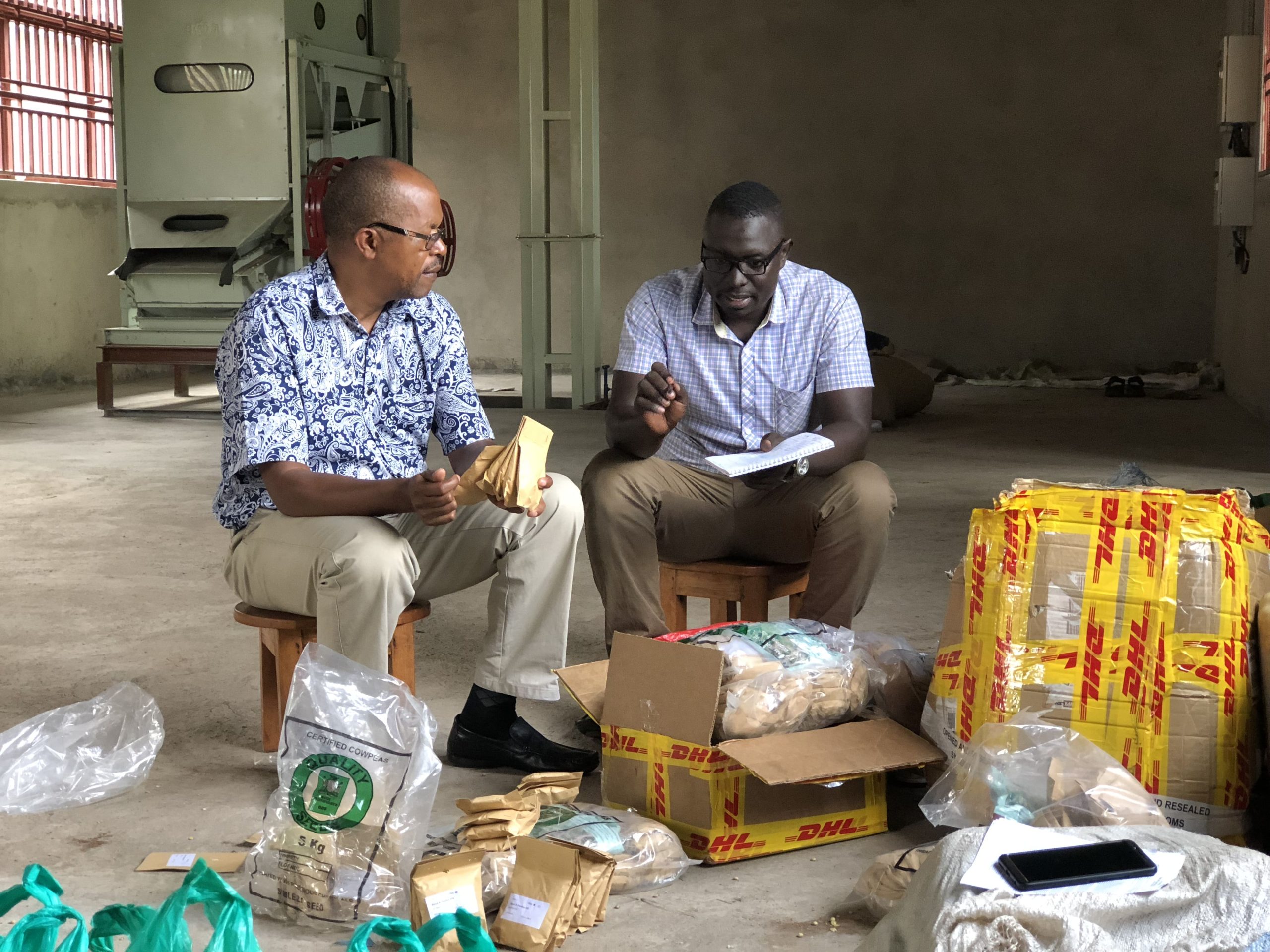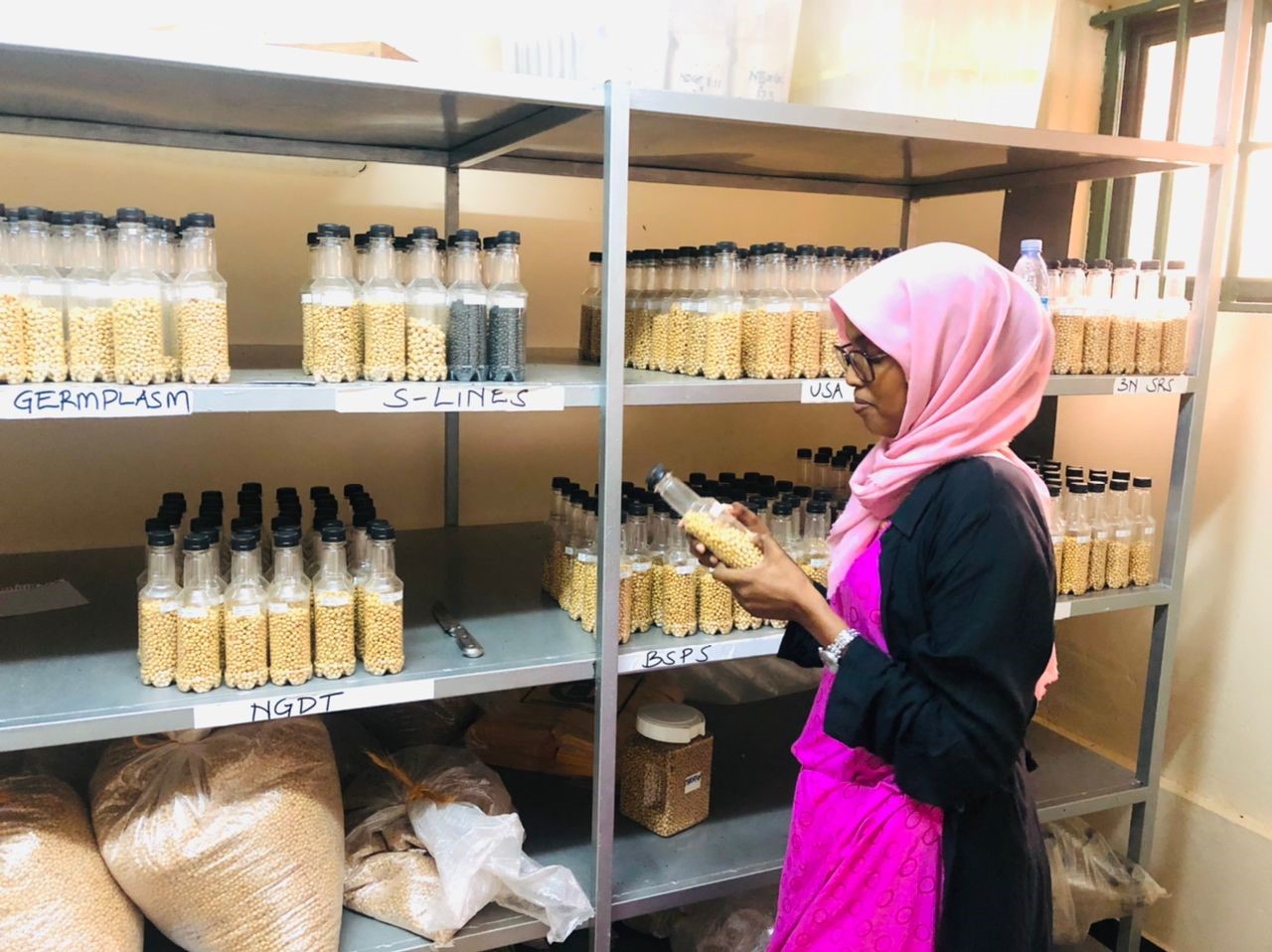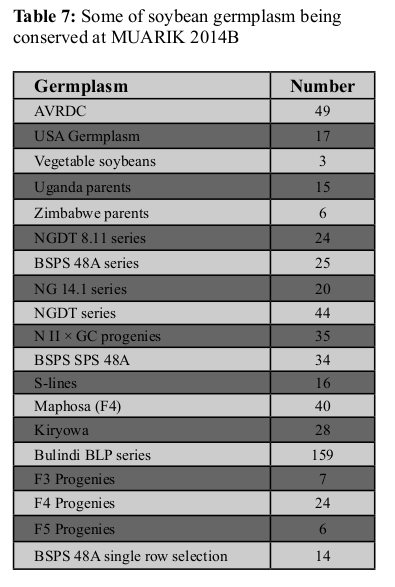Germplasm Conservation
Germplasm Conservation
Germplasm conservation is a core component of any breeding programmes given that wide variation is required in the gene pool for any selections to be made. Hence, countries should develop their own genetic conservation programmes.
National conservation systems are needed so that collections of key germplasm can be maintained for all crops in the country. In the past 16 years, the research collaboration between Makerere University and National Crop Resources Research Institute (NaCRRI) has helped to maintain eight soybean varieties, more than 400 germplasm and more than 1000 breeding lines. The major commercial cultivars and previous cultivars are also being maintained at NaCRRI through seasonal regeneration to ensure availability of breeder seed. Eleven released soybean varieties are being maintained (Table 4).
Conservation has been mainly through field banks and short term storage in seed genebank with regular regeneration. Materials in storage were received from the AVRDC, USA, IITA – Nigeria, Zimbabwe, and farmers’ fields in Uganda. The accessions under conservation also include vegetable soybean.
Descriptors for these accessions have been recorded and whenever necessary, specific accessions are used in crossing experiments. Whereas most of these accessions are not locally adapted, they contain important genes such as soybean rust resistance (Rpp1, Rpp2, Rpp3, Rpp4, UG-5, TGX-1835-10E) that have been crucial in breeding programs in the country.
A lot of effort is needed to improve germplasm conservation infrastructure. A seed bank was established at Makerere University Agricultural Research Institute, Kabanyolo (MUARIK) in the 1960s but considerable efforts and resources should be committed to utilizing this facility.
Maintenance and operational resources have to be provided in a manner that will be sustainable such as solar powered storage facilities. Irrigation facilities should also be established at field locations where regeneration activities will be conducted to avoid crop failure.
Germplasm database for researchers
A database has been developed by the Centre for Soybean Improvement and Development for management of various soybean research information to ensure proper storage, retrievals and sharing information among scientists to facilitate germplasm use and exchange. It is a relational database of linked primary and secondary tables developed using the Microsoft Office Access Program. The primary tables have fixed fields for variables and draw a lot of the information from the different secondary tables which are designed to have continuous gap fillings.



Key data fields in the database include: different types of germplasm (released varieties, introductions, elite stocks, breeding lines and landraces). For each
germplasm category, information provided includes sources and origin, pedigree, qualitative information like seed color and size, plant architecture and plant vigor, as well as quantitative information like yield parameters. Other variables are adaptations of the germplasm to different locations and resistance to major constraints such as pests, diseases, and drought. The plans for further improvement and accessibility of the database include gap fillings with the available information. The database will also need to be integrated with a website so that it can be accessed online by many users. However, the rights to full and limited access to this information by different users are under review. There is a need also to test the ease of use of the database by the end-users.

